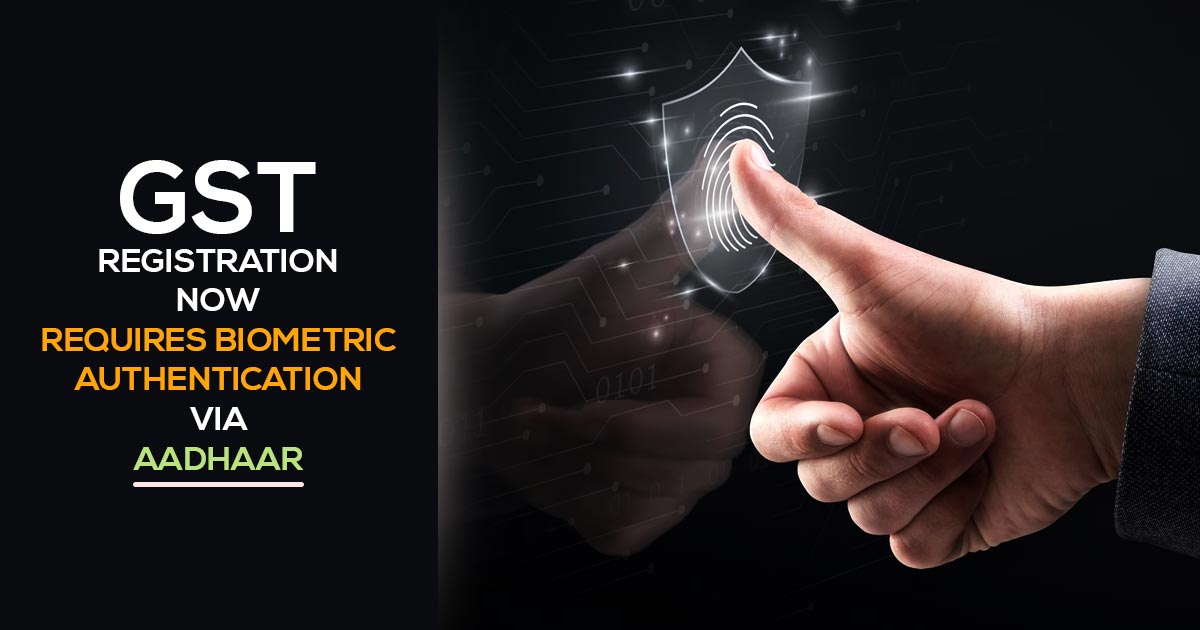
The Central Board of Indirect Taxes and Customs (CBIC) recently made it public through social media about the implementation of a new GST registration rule. This rule necessitates biometric authentication through Aadhaar and in-person verification for certain taxpayers identified based on data analytics and risk parameters. The objective behind this change is to enhance security and prevent fraud.
Applicability of the Rule: Uniform Application Across States and UTs
The rule is applicable uniformly throughout the nation including all the states and union territories. According to CBIC’s post on social media platform, X, the new requirements are based on provisions of sub-rule (4A) of rule 8 of the CGST Rules, 2017. These requirements have been effective since March 31, 2023. The new rule mandates biometric authentication and in-person verification before giving GST registration to applicants categorized through data analytics and risk parameters.
Who Should Visit a GST Suvidha Kendra?
Some taxpayers need to visit GST Suvidha Kendras for biometric authentication and document verification, these include-
- High-Risk Taxpayers Identified: This includes individuals categorized by the GST system due to risk parameters and data analytics.
- Taxpayers Skipping Aadhaar Authentication: Taxpayers who do not want to do biometric Aadhaar authentication need to visit the centre for photo capturing and document verification.
Biometric Authentication Process
Biometric authentication is the verification of the taxpayers’ identities through their Aadhaar-linked biometric data. Here are the steps to follow:
Step 1: Submission of Aadhaar is Required: During GST registration, taxpayers provide their Aadhaar number.
Step 2: Biometric Verification Required: At the GST Suvidha Kendra, taxpayers undergo verification to validate their identity.
Step 3: Required Document Verification: Taxpayers provide original documents, including identity proof, address proof, and business-related documents to validate their identity.
Significance of the New Rule
The new rules for GST registration implemented for:
- Fraud Prevention Measures: The new GST registration rule aims to prevent fraud by ensuring that only genuine taxpayers can register, thereby stopping fraudulent activities.
- Improving Compliance: By authenticating taxpayers’ identities, the rule improves compliance and ceases tax evasion.
- Optimizing the Process: Although it includes an additional step for some taxpayers, the process confirms preciseness and legitimacy in the registration process.
Relief from In-Person Verification
Some taxpayers can still complete GST registration online not requiring a Kendra visit. These taxpayers include-
- Taxpayers Choosing for Aadhaar Authentication: Individuals who complete Aadhaar authentication online can complete GST registration without a physical visit.
- Low-Risk Taxpayers: Taxpayers categorized as low-risk based on their compliance history are exempted from in-person verification.
- Special Categories of Taxpayers: Government entities and specific categories of taxpayers notified by the GST Council are also exempted from the in-person verification requirement.
Finishing Online GST Registration
To register for GST online, eligible taxpayers can follow the steps below:
- Aadhaar Authentication: Ensure the accurate linking and authentication of Aadhaar details.
- Online Document Submission: Submit all required documents, including identity proof, address proof, and business details, using the GST portal.
- E-Signature Utilization: Apply an electronic signature to authenticate and submit the registration application.
Advantages of the New Rule
The implementation of the new GST registration requirement brings forth several advantages:
- Enhanced Security: Biometric data, which is challenging to counterfeit, adds an extra layer of security to the registration process.
- Fraud Reduction: By verifying the identity of applicants, the new rule helps in minimizing fraudulent registrations.
- Improved Compliance: Ensuring that only legitimate taxpayers can register contributes to overall compliance enhancement, fostering trust in the system.
The introduction of biometric authentication and in-person verification for GST registration represents a remarkable step towards establishing a more secure and dependable GST system. While it involves additional steps for certain taxpayers, this measure plays a vital role in preventing fraud, promoting compliance, and building a trustworthy tax environment.
Read Also: AP State Gets Biometric Aadhaar Authentication for Simplifying GST Registration
Taxpayers are strongly encouraged to familiarize themselves with the new rules and complete the necessary steps to ensure a seamless registration process. This effective approach will establish a smoother experience and compliance with the updated regulations.